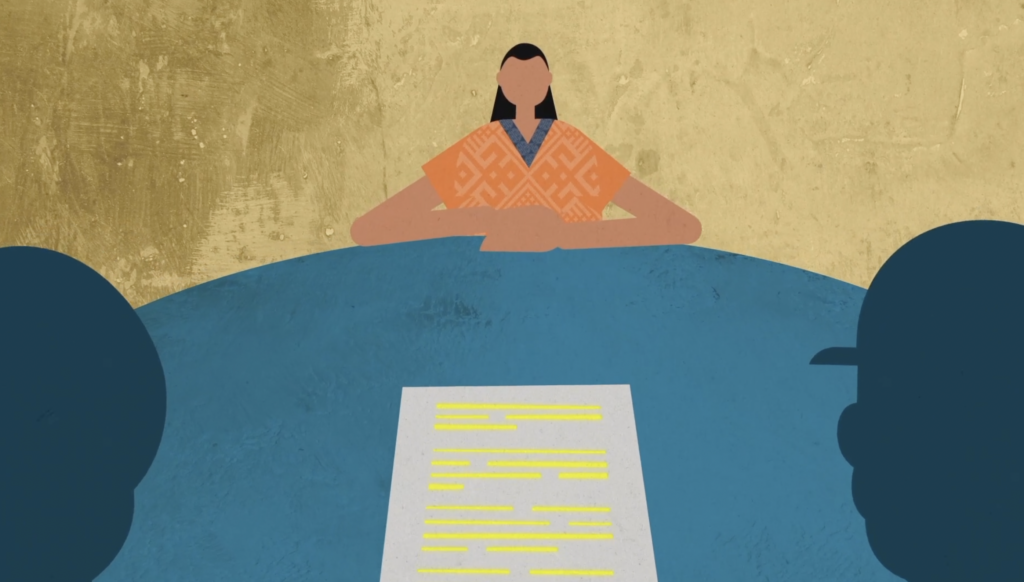In January 2021, Protection International brought together a group of interdisciplinary experts from the Americas, Europe, the Middle East and North Africa, Sub-Saharan Africa, and Southeast Asia to craft a list of principles for “Redefining the Risk Approach”. Find a summary below.
The risk approach has become an integral tool for addressing the protection of human rights defenders (HRDs) around the world. Its adoption has been rapid, partly linked to the fact that the risk approach has been permeating many facets of society for decades, and partly due to the fact that it offers simple and easily applicable tools for conducting a situated analysis for HRDs under threat, offering a pathway towards effective decision-making. However, its simplicity, applicability, and indiscriminate use have also shown shortcomings and limitations that need to be addressed.
The Risk Analysis and Protection Plan Principles are meant to set minimum standards for how a risk analysis should be conceptualized, how it should be approached, and how it can be translated into a suitable protection plan.
The State, and not the HRDs, has the obligation to, and bears the principal burden of, reducing the risk that HRDs may face.
A risk analysis and protection plan are most effective when elaborated with the active participation of, and ultimately accepted by, the HRDs concerned.
HRDs have the right to a safe, transparent, and clearly understandable risk analysis and protection planning process, even for non-experts.
A risk analysis and protection plan should be carried out with a non-discriminatory (or differential), gendered, intersectional, and psychosocial approach.
A risk analysis and protection plan should adopt a comprehensive approach, taking into account other possible sources of aggression that may impact the HRDs’ ability to carry out their work, despite the fact that they may not be directly related to the work of the HRDs


A risk analysis should include, in addition to attacks on life and physical integrity, aggressions of all kinds as well as how those aggressions accumulate according to the HRDs’ situation.
A risk analysis must be context-driven, putting the HRDs and their communities at the centre. A risk analysis should be updated and evaluated periodically.
A risk analysis should be qualitative and deliberative in character because there is no proven socio-scientific basis for mathematically quantifying the risk that HRDs may face.
All necessary measures should be taken to guarantee that HRDs can meaningfully and effectively participate in their risk analysis process.
A risk analysis should not be considered an investigation, but rather it is an evaluation in which the testimony and experiences of the HRDs affected are pivotal. The presumption of the HRDs’ good faith, the veracity of their claims, and Do No Harm principles should always be applied.
Conducting a risk analysis and estimating the risk level are two connected but differentiated steps in the overall assessment. Both are important for assessing the risk that HRDs may face.
A risk analysis should be carried out by people with specific training in risk analyses for HRDs and follow existing best practices, including the application of a human rights, gendered, and psychosocial-informed approach in order to avoid revictimization.
A risk analysis should serve as the foundation for creating an adequate protection plan.
One of the key objectives must be to reduce the threats against HRDs— that is, to reduce the intent and ability of the potential aggressors to act. Any proposed security-based limitation to the activities of the HRDs should be well-motivated, necessary, legal, proportional to the level of risk, and kept for as short a period of time as possible.
A protection plan should have clear, expected results for the different prioritised risk situations, should be context-driven and updated and evaluated periodically.
A protection plan should be comprehensive and adapted to the work of HRDs. It should prevent and address different sources of aggressions and their consequences.
Since the State is the principal duty-bearer for implementing the protection plan, State bodies must take the necessary measures—including establishing public policies, regulatory reforms, coordination mechanisms, etc.—so that all national and local public entities, within the framework of their competences, systematically mobilise to effectively contribute to the implementation of the protection plan.

Find the full document on the Risk Analysis and Protection Plan Principles in English, Spanish, French, Portuguese, and Arabic. The explainer animation is currently available in English, Spanish and French.
We are an international non-profit organization that supports human rights defenders in developing their security and protection management strategies. Protection International has been working since 2004 with local partners in over thirty countries across the globe.
© 2021 Protection International | Website by Prosite